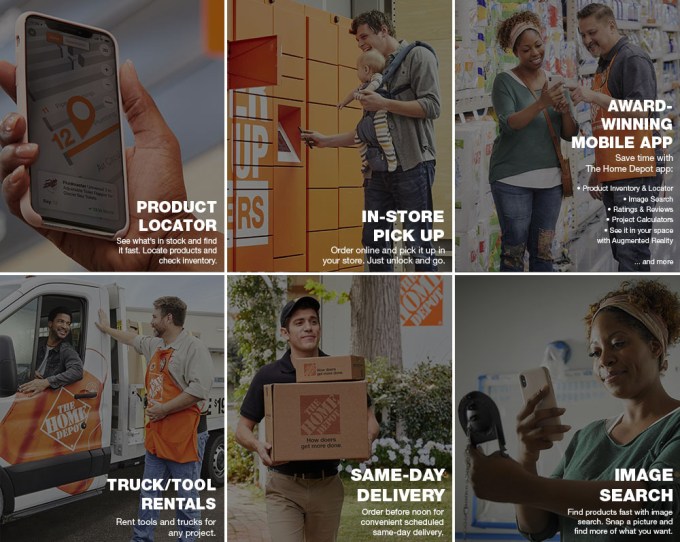In 2017, The Home Depot announced a multi-year investment to strengthen its leadership position in interconnected retail, blending the physical and digital worlds. This set of capabilities would feel like one seamless experience for customers: one that required thousands of stores to be outfitted with pickup lockers, an expansion of fulfillment centers, a renewed focus on the mobile app and the expansion of many other services, all working together in harmony.
Fast forward to 2020: When COVID-19 upended how consumers shop and transact, these capabilities became even more crucial. With people staying in more, many took the opportunity to spruce up their living spaces. The Home Depot was able to offer services like curbside pickup and faster delivery, while also ensuring associate safety through in-store mandates. By August, the company had seen 100 percent growth in digital sales, with 60 percent of online orders picked up at stores. And across all of its fulfillment options (buy-online-deliver-to-store, buy-online-pick-up-in-store, curbside pickup), The Home Depot has seen triple digit growth.
By checking the boxes with online and in-store capabilities, The Home Depot has been able to address a dizzying array of customer use cases: Amy is repairing her generator and needs to make multiple trips, so by ordering supplies online and using The Home Depot lockers for quick pick-up, she can save time and focus on her repair. Ben takes a photo of a broken part in his washing machine and uses visual search on The Home Depot app to identify the part. The app directs him to the exact aisle where the part is located when he goes to his neighborhood store.

Image Credits: The Home Depot
Across all customer touchpoints, from stores and online to call centers, the vision for an interconnected experience has been to have one unified view of the customer experience to continue enhancing it, no matter where customers choose to shop. To achieve this, UX teams need to see where shoppers hit roadblocks as they moved from using online to in-store capabilities. Marketing teams need to understand how customer needs vary to better personalize their experiences. Senior leaders need a more accurate view of the investments that were driving the most impact.
The Home Depot uses Adobe Analytics and Adobe Target to continue to make decisions in the midst of changing customer expectations. During COVID-19, these platforms played a role in making the company’s curbside experience come to life. The process for curbside pickup started off manual, with stores making handmade signs to guide customers. As customer needs and adoption grew, The Home Depot built curbside into its digital experiences to make the process more seamless for both customers and store associates.
“Adobe Analytics and Adobe Target helped us collect the right data to optimize the store check-in experience for our customers,” said Jyoti Shah, director of online analytics and business intelligence at The Home Depot. “These insights were crucial in providing the best experience for our customers, both digitally and in-store.”
In times of upheaval, The Home Depot has been able to maintain continuity for both customers and associates. They not only invested in channels that were non-traditional for big retailers, but they found ways to activate a large physical footprint with digital technologies. The Home Depot has refined a model that will be a sustaining force in retail, where the shopping experience is seamlessly blended, and the customer experience is placed at the core.